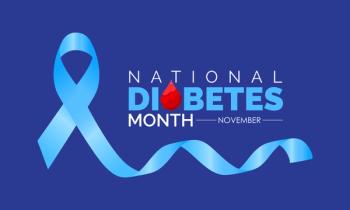
NACDS to Congress: Pharmacists Should Play Bigger Role in Immunization
Pharmacists have rapidly become among the most common deliverers of the flu vaccine, but their full potential as immunizers has not been tapped, the NACDS argued in a statement.
Pharmacists have rapidly become among the most common deliverers of the flu vaccine, but their full potential as immunizers has not been tapped, the NACDS argued in a statement.
Community pharmacies play an important and growing role in delivering flu vaccinations to patients, but they should be empowered to play a much larger role as immunizers, the National Association of Chain Drug Stores (NACDS) argued in a
The statement pointed out that pharmacists are accessible and cost-effective members of the health care team. “Studies have shown that pharmacist-provided immunization services increase the overall immunization rates,” the NACDS said in the statement. “Overall in 2010-11, 18.4% of adults received their influenza vaccine at their local supermarket or pharmacy, second only to a doctor’s office.”
These findings are corroborated by studies carried out by the Centers for Disease Control and Prevention (CDC), which show that pharmacists have been essential in increasing vaccination rates in the Unites States. “In fact, the CDC has specifically asked the pharmacy community for their continued support and efforts to help address vaccination needs in their local communities,” the NACDS said in the statement.
Increased rates of vaccination by pharmacists have the potential to reduce health care costs for consumers, insurers, and Medicare and Medicaid. When the TRICARE military health care program first allowed beneficiaries to obtain flu and pneumococcal vaccines from pharmacies, the Department of Defense noted significant health care savings.
“It was estimated that for the first 6 months that beneficiaries could obtain their vaccinations from pharmacists, 18,361 vaccines for H1N1, flu, and pneumococcal were administered at a cost of nearly $300,000. Had those vaccines been administered under the medical benefit, the cost to TRICARE would have been $1.8M,” the NACDS reported in the statement.
Pharmacists can administer the flu vaccine in all 50 states and the District of Columbia, but their vaccination efforts are still limited in many instances by state laws and restrictions. The NACDS statement stressed the need for pharmacists to be empowered to do all they can to help vaccinate more patients.
“Pharmacists should be allowed to practice to the maximum of their capabilities, partnering with other health care providers in coordinated efforts to decrease the number of under-vaccinated Americans. Laws and regulations that limit the ability of pharmacists to administer vaccinations should be amended to enable pharmacists to make a broader impact on vaccination rates,” the NACDS said in the statement.
The NACDS also cited pharmacists’ extensive education and training as evidence of their ability and preparedness to help increase coverage with the flu vaccine as well as with other vaccines. In the conclusion of its statement, the NACDS argued that pharmacists should be more involved in flu preparedness and vaccination.
“Considering the improvements in public health and the health care savings that one can expect to achieve through expanding the authority of pharmacists to administer immunizations, any influenza preparedness strategy should maximize the potential of pharmacists to provide important immunization services to more Americans and to practice up to their full capacity,” the statement concluded.
Newsletter
Stay informed on drug updates, treatment guidelines, and pharmacy practice trends—subscribe to Pharmacy Times for weekly clinical insights.


















































































































































































































